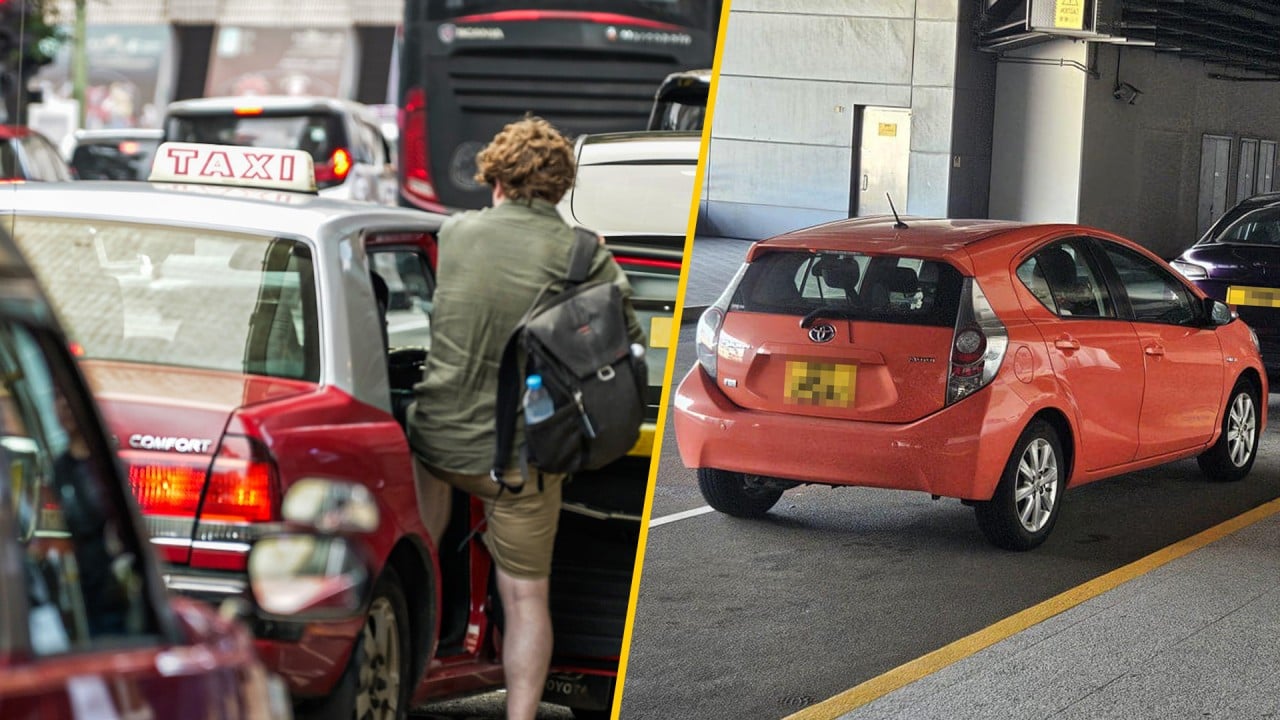
Have Hong Kong taxi drivers slammed the brakes on bad behaviour amid Uber feud?
- Post camps out at taxi ‘black spot’ and goes on undercover cab rides, finds no sign of drivers overcharging, refusing to take passengers or not using their meters
- Uber drivers and cabbies say they serve different segments, not everyone is unhappy over competition
First, a group of cabbies went undercover as Uber passengers and made at least 13 police reports against drivers they accused of providing illegal ride-hailing services.
That drew a backlash, with internet users swapping tips on social media and online forums on ways to report cabbies who were illegally parked or committing other violations.
Uber has been in Hong Kong since 2014, but its legal status has long been in question as the city lacks legislation to regulate ride-hailing apps.
Checks by the Post this week found no sign of cabbies overcharging, refusing to take passengers or not using their meters – all common complaints against the city’s taxi drivers.
The Post spent an afternoon observing taxis near the Marco Polo Hongkong Hotel in Tsim Sha Tsui, an area with a reputation as a black spot for cabbies behaving badly.
Over about three hours, only one cabby was spotted trying to drum up customers among tourists while his flag was covered. Dozens of other drivers were prepared to use the meter when approached for a ride.
There was also a heightened police presence, with one of the force’s vans parking near the area twice during that period.
Most said they had not experienced any issues with cabbies, but two said they had heard about the city’s “notorious” taxi drivers and only used Uber.
Uber remains popular with passengers, although generally, it is against the law for private vehicles to accept customers without a hire-car permit from the Transport Department.
More than 216,000 drivers were registered with Uber and Uber Taxi as of 2021, according to the latest available data from the company. Hong Kong has 46,000 taxi drivers.
The government’s Transport Advisory Committee said it received 2,890 complaints concerning taxi services between October and December of 2023, an increase of 34 per cent from the 2,156 filed over the same period in 2022.
The Post also went undercover, taking three taxi rides and four Uber trips to ask the drivers how they viewed the controversy.
Both groups of drivers agreed that overall, business was down compared to before the Covid-19 pandemic, and neither side expressed major animosity towards the other.

One female Uber driver said she felt sorry for “frontline taxi drivers” who had become the target of Hongkongers upset by the cabbies’ vigilante action earlier this month.
“I don’t think we are in competition with taxis,” she said. “Passengers have their preferences – some like taxis and some like Uber. I think we have different target customers.”
The sting operations did not appear to lower the number of Uber drivers available on a weekday. The Post could confirm a ride within seconds.
Another Uber driver, who has been driving full-time for the past seven years, said he felt only cabbies who owned taxi licences were angry because their value had shrunk as ride-hailing services became more popular.
The price of a licence plus a taxi reached a record HK$7.66 million (US$981,000) in 2009, but has since fallen steadily to HK$3.22 million.
A cabby who started driving three years ago to supplement his retirement income said he did not have specific issues with Uber drivers, but his main concern was passenger safety.
“If there is an accident, the passenger will not have any insurance,” he said.
While Uber has bought coverage for all its drivers in compliance with the Motor Vehicles Insurance (Third Party Risks) Ordinance, the lingering legal doubts have raised questions about the legitimacy of its insurance coverage.

One taxi driver of more than 22 years said he had tried using his own car to drive for Uber as well.
While Uber meant more competition for cabbies, he felt it met a need in the market because the taxi industry was dogged by service quality issues.
He preferred working for Uber because of its lower cost and convenience, but stopped after he got into an accident due to concerns over its legality.
Using a vehicle for hire or reward without a hire car permit carries a maximum penalty of a HK$10,000 fine and six months in prison for a first offender. Subsequent convictions can result in a year in jail and a HK$25,000 fine.
The driver said if Uber was declared legal, he would buy a new car and resume driving for it.
For now, however, he said: “We face arrest. This is a risk.”


